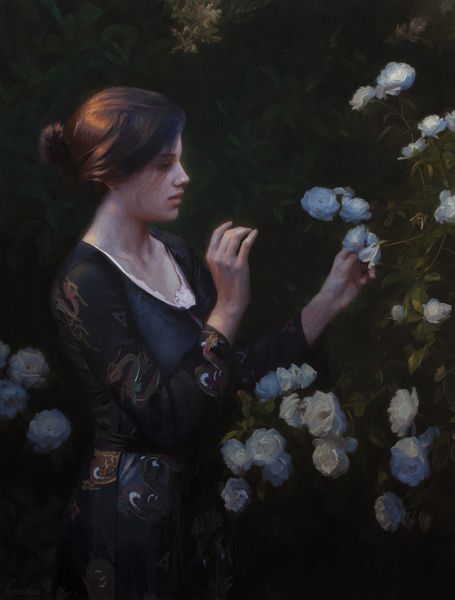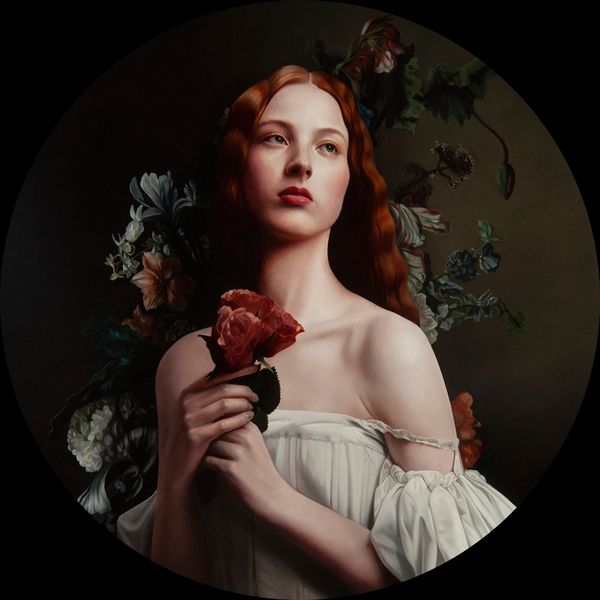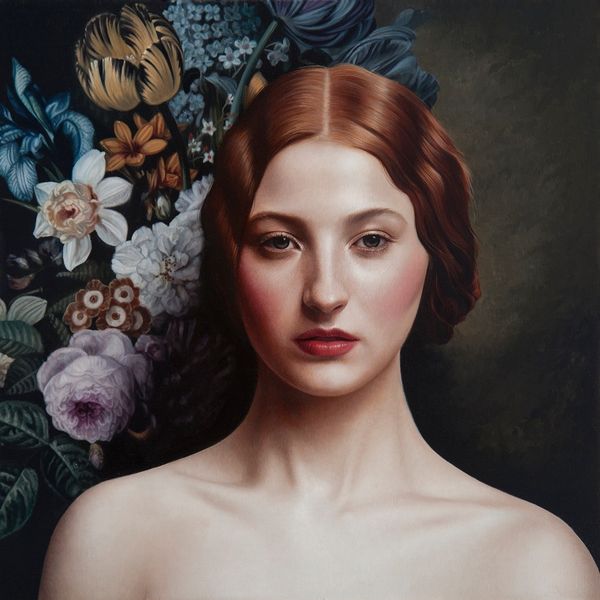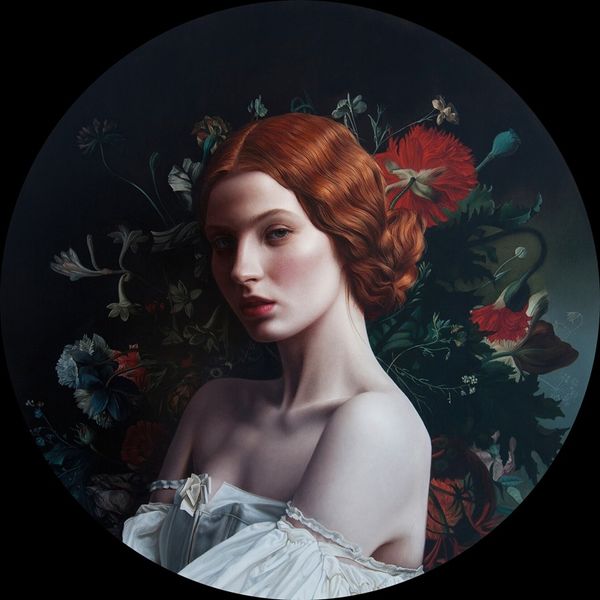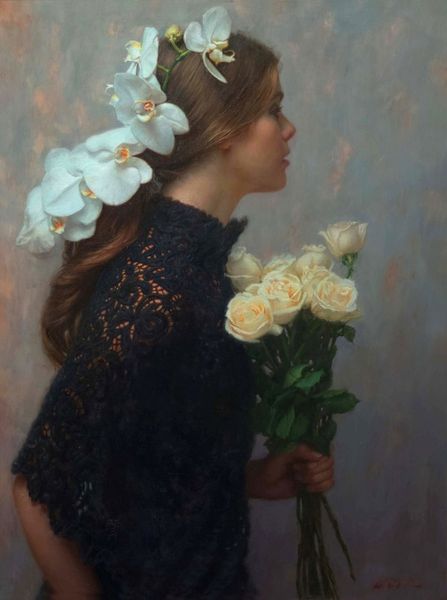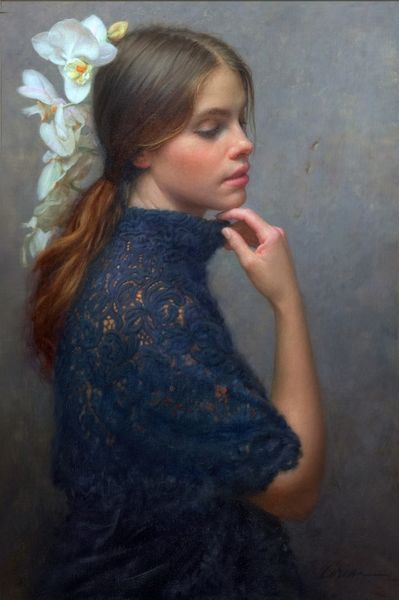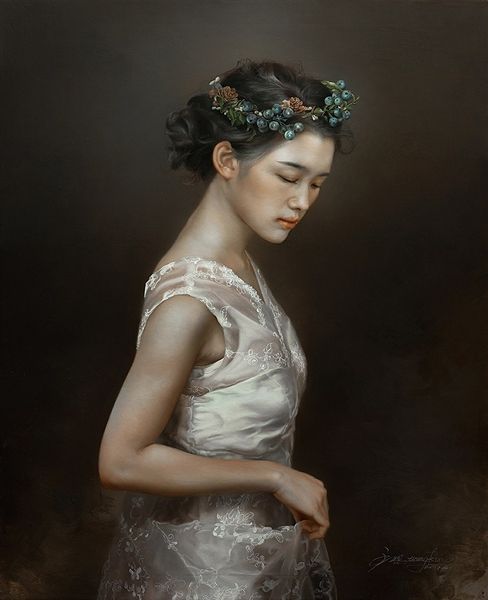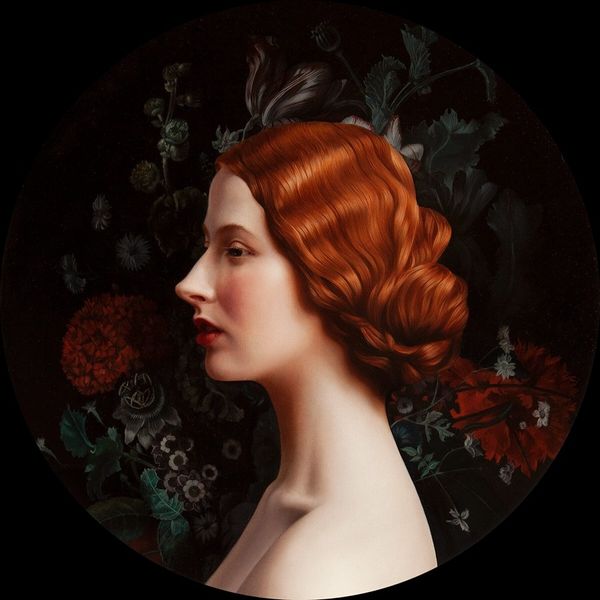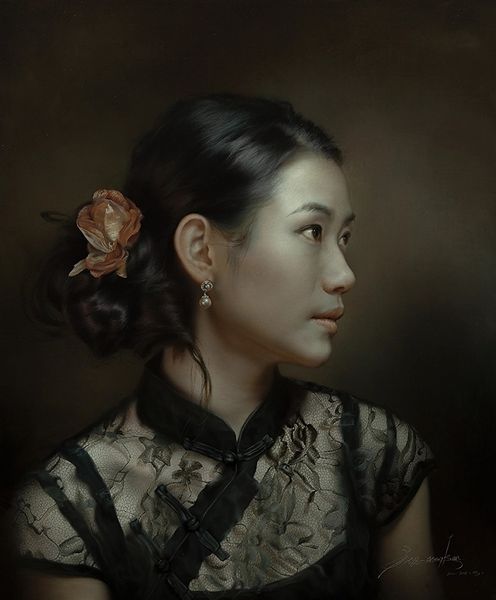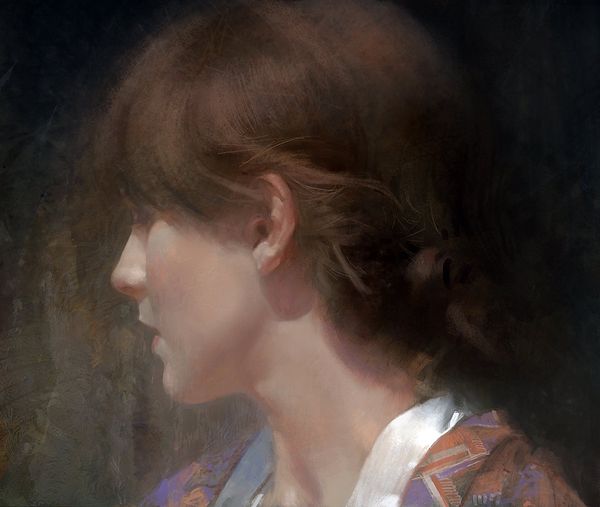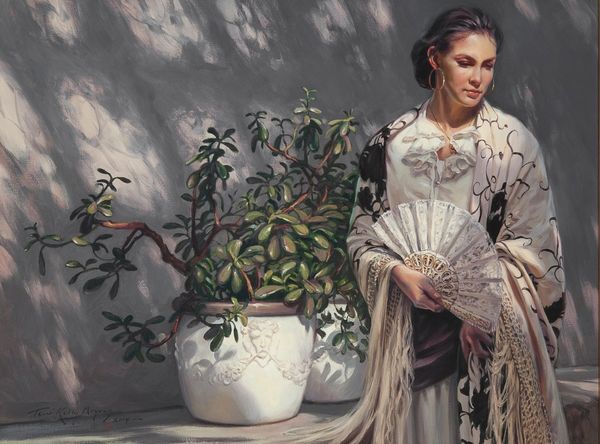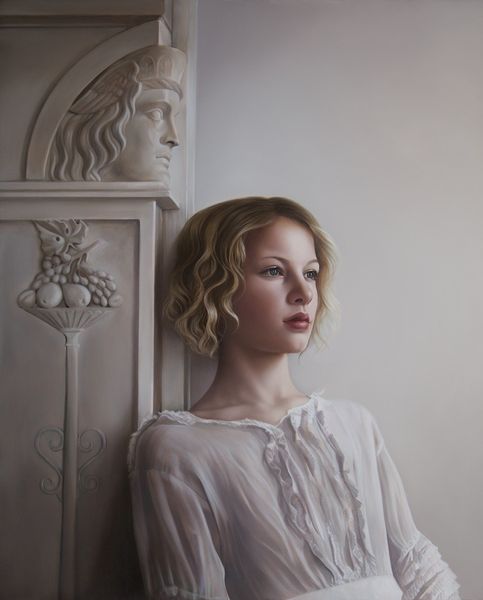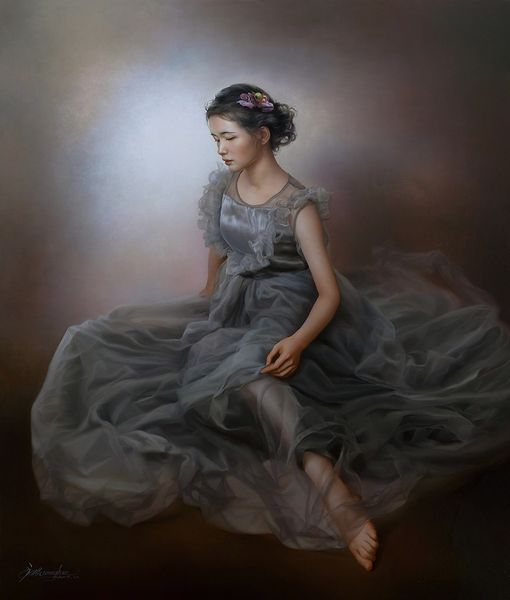
painting, oil-paint
#
portrait
#
figurative
#
painting
#
oil-paint
#
landscape
#
figuration
#
nature
#
romanticism
#
realism
Copyright: Modern Artists: Artvee
Curator: The work we’re looking at is called "Morning Roses," an oil painting by Adrian Gottlieb. The piece shows a young woman gently holding and smelling a rose. It feels like a very classical, romantic image. What catches your eye? Editor: The texture is interesting. The softness of her skin seems to contrast with the heavier texture of the surrounding foliage and her clothing. And the dress isn't a historical piece, and that pulls my eye. What can you tell me about how its materials might relate to the rest of the composition? Curator: Note how the artist uses oil paint to achieve such realism. What is oil paint composed of? Ground pigments, often mined or synthesized, bound in a drying oil. Now, consider the implications of using such labor-intensive materials, and how they connect to the depiction of beauty and leisure in the image itself. What societal values are embedded within that act of creation, using the techniques that he has? Editor: That’s a good point. The detail achieved is incredible. I guess I hadn't thought about where oil paints came from, the historical processes necessary to produce them. Does Gottlieb’s realism then become a statement itself? Does the conscious act of portraying in minute detail lend some symbolic weight to the act? Curator: Exactly. And, going back to your comment about the fabric of her dress...what’s suggested when he pairs painstaking realistic method, with what seems to be, some printed modern textile? Editor: I suppose, in one sense, the ready availability of modern clothing contrasts to the handmade nature of the oil paints. Almost juxtaposing modern industrial practices with more traditional labor-focused modes of artistic creation. It speaks to availability and labor. Curator: Precisely! Reflecting on these things really makes you consider the broader cultural context woven into the artwork, doesn't it? Editor: Definitely! I’ll never look at the material components of art the same way again!
Comments
No comments
Be the first to comment and join the conversation on the ultimate creative platform.
